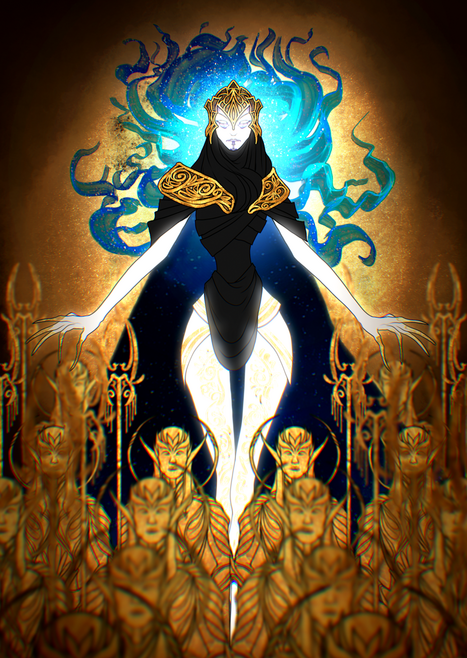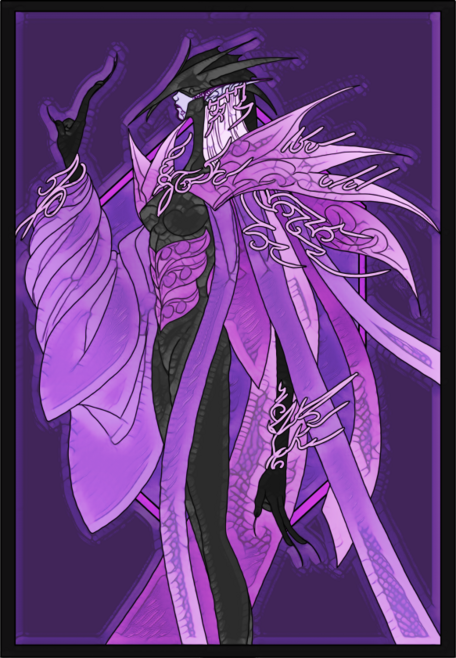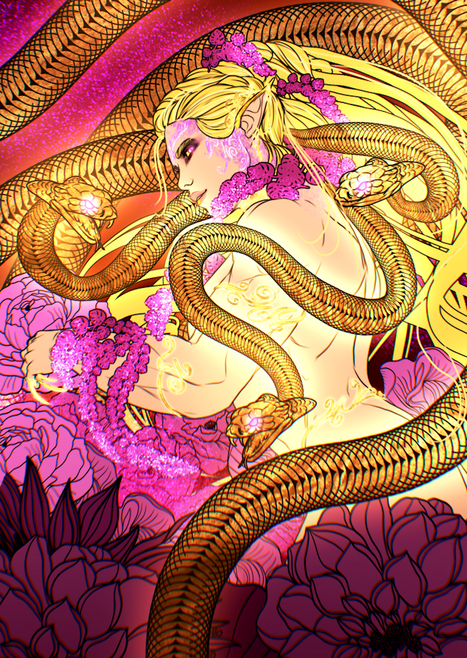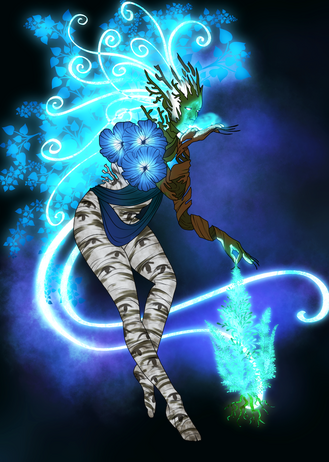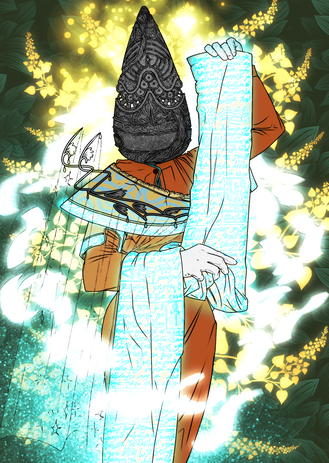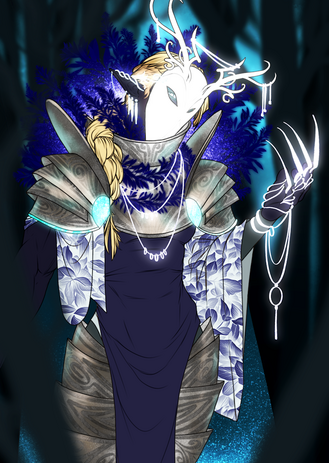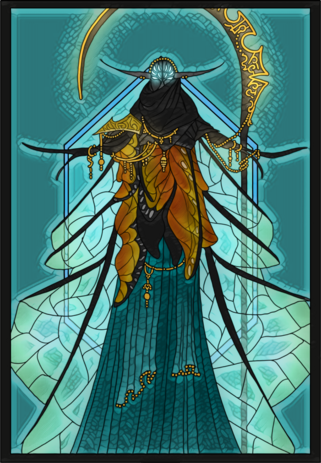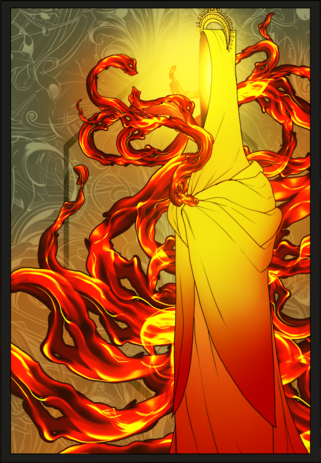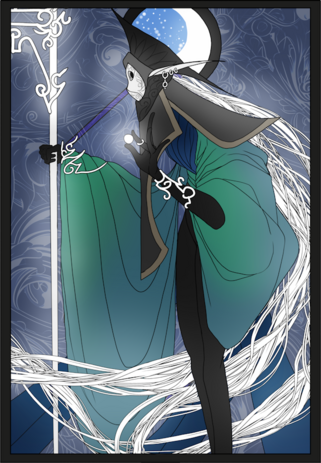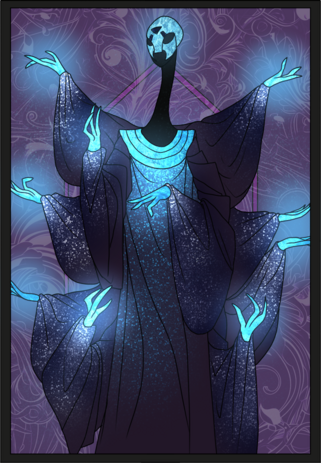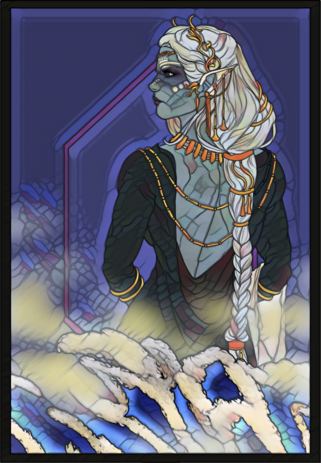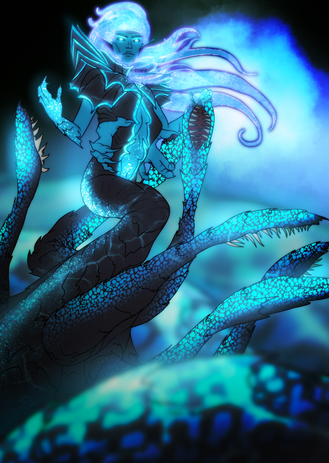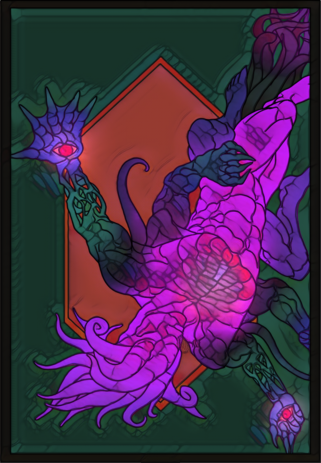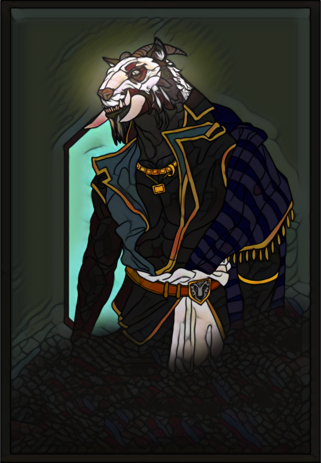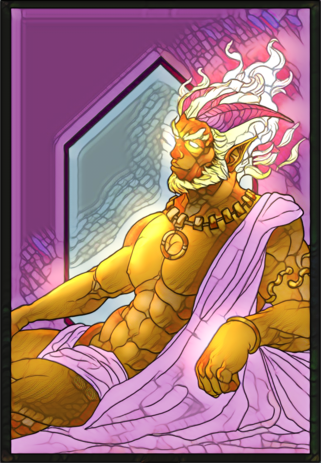Estelley: Difference between revisions
No edit summary |
No edit summary |
||
| (28 intermediate revisions by 2 users not shown) | |||
| Line 1: | Line 1: | ||
{{Info religion | {{Info religion | ||
|image = | |image = noimglong.png | ||
|pronunciation = | |pronunciation = Es-te-ley | ||
|origins = 15,000 years ago. | |origins = Presumed roughly 15,000 years ago. | ||
|deities = | |deities = Three greater Gods, 5 Gods, 5 optional Gods. | ||
|}} | |}} | ||
Estelley, or "Estel's Law," is the original faith of most Elves in the world. A moralizing, perfection-focused Religion, it is observed by most descendants of the Allorn (Elven) Empire across the world in varying ways and with varying zeal. Having enjoyed status as the pre-eminent Religion before, and hoping to enjoy it again, despite its struggle to spread beyond the Elven peoples it remains respectably powerful. Estelley worshipers believe that they are opposed in their divine struggle both by those who teach alternative paths to paradise and those who seek to corrupt the world alike, but that mortal heroes carrying the torch will defeat the usurpers and restore Elvendom to the glory it once knew. | |||
Estelley is the | |||
==Origins== | ==Origins== | ||
The early Elven peoples were no more than barbaric tribes on the fringes of the Dewamenet Empire, an [[Asha]] state poised to conquer the known world. Its hatred of Magic and the ascendancy of a trio of Goddesses led the Dewa and the Elves to clash, and with their divinities' power making victory possible, they declared their own Allorn Empire in its ashes. From there, the various deities were pulled into the Pantheon by the War Goddess Talea one by one. This is discussed further in Expanded Lore. | |||
==Core Beliefs== | ==Core Beliefs== | ||
Estelley | ===Central Message=== | ||
The central message of the Estelley faith is that the whole of the world is a flawed creation of the Dragons that is being ordained to a more perfect reality by the Estelley Gods. The Empresses combined to lead a host of Gods and Goddesses to create a more perfect world, starting with the mortal agents of their will, their followers. Through the Perfections of the Gods, mortals learn to strive for a better world, and thus change the world around them. When they die, their soul is weighed by Ammuloa onto the Perfected Balance, to measure their perfection. If they had sufficient perfection, they would pass into the Eternal (Merjan in Altalar, the Elven Language), an afterlife which weaves the faithful into the fabric of reality making them able to change the world like Dragons in subtle ways. If rejected, their souls is passed back to the land of mortals through reincarnation. | |||
=== | ===Perfected Will=== | ||
The Perfected will describes the Perfections of the Gods. These are like virtues that mortals are expected to live by, to increase their inner and outer perfection so they too can become perfect world-shapers. Each God has a different perfection. Through the Empresses, Cemaan measures perfection by the amount of people subjugated, Talea by the amount of people defeated in battle, and Sapphora by the amount of people who love and adore the soul. Through the Ordained, Mana measures in kindness and compassion, Aseia in Magical knowledge and ability, Artarel through law-abiding and just acting, Ammuloa to dedication to achieve things before death, Avinla to dedication to experience things in life, and Leyon measures perfection in the desire to solve the mysteries of the ages. Finally, the Vowed Gods, Melca measures perfection through companionship and the protection of others, Sinnavei through the gaining of material and spiritual wealth, Vyrë through respect for that which is greater than the self, Soma through intellect, Gilan through lordship over wildlife, and Suellon over adaptation to change. | |||
===The Afterlife=== | |||
A person can be more perfect in some qualities, and generally speaking not all perfection standards need to be met to have one's soul passed into the afterlife, though reaching all of them is considered a great piety. The Estelley Afterlife is described as a physical realm that is experienced as a perfect land where the souls continue to hone their perfection in the afterlife while mortals and the Gods continue to build towards a world that resembles this more perfect world called the Eternal. It is believed that the souls in the eternal lands of bliss that is the Eternal, still help mortals as well, by gently pressuring reality in the living world to reach such a more perfect state. It is believe that at a certain point, the perfected souls in the Eternal will be so numerous, that they will out-pressure the flawed creation of the mortal world, and merge the rivers of the Eternal and Aloria to become one perfect reality. It is believed by the faithful that Lathan is part of the Eternal as an outer realm of it, and many believe the Eternal to be much like Lathan but more of everything and better. | |||
===The Ruindawn=== | |||
The Ruindawn is an important period in Estelley history that nonetheless has left no records, but many legends and tales. The Ruindawn describes a period during which the Empresses agree in a compact that the world is flawed, and that they will right what has been wronged by a misshapen reality. To them, all living things are condemned to needless suffering by the way the world works, and that they could ordain a better world but by the flawed laws of the world by itself cannot do so alone. Their vision lacked clarity for those who were not in agreement, and so began the Ruindawn where the Empresses would either subjugate by will, or more commonly conquer by force other Gods of minor proto-Elven Religions as well as Religions from other peoples. Sometimes these legends also include tales of Gods who refused and were slain by Talea or had their power absorbed, or those Gods who early on decided to be an obstacle to the work of Estelley and made it their mission to sabotage their efforts, but were eventually defeated and removed from reality. The Ruindawn is in essence a rare concept for Aloria, as Gods of various religions tend to be secluded from one another, it shows a period of active conquest, of one Religion subjugating at least a dozen others and forcing them all into a unified doctrine. The legends focus mostly on how Sapphora convinced some to join, how Talea defeated the majority by the sword, and how Cemaan subjugated a few by sheer pressure of influence. | |||
===Avinla's Death=== | |||
Avinla's Death is in the grand scheme of things not a world-shattering event, but important enough for all faithful to know. Gods do not truly die, but they can approach a death-like state, which has happened to Avinla. The homeland of the Suvial Elves has been terrorized for centuries by massive Magical events called Void-Outs which killed hundreds of thousands. In order to stop the endless suffering and potential eradication of her worshipers, Avinla sacrificed herself, forming a massive network of rings of fire in the skies over the Suvial lands like a blanket of chainmail. This protected the Suvial lands, but had other unintended side effects. Due to their heavy association with her, the Suvial Elves no longer had their Mother of Fire breathing life into their newborns, or passing their souls to Ammuloa for judgement to the Afterlife. As a result, no new Suvial could be born, and each Suvial that was born, was a reincarnation of a long-dead one. No Suvial could die either, as Ammuloa could simply not receive their souls, starting a deathlessness for the Suvial that is living torment for them (read more on the [[Suvial]] Page). | |||
=== | |||
=== | |||
==Gods and Goddesses== | ==Gods and Goddesses== | ||
Estelley | Estelley as a Religion has one unified Pantheon, but not all Gods are treated equally. At the head of the Pantheon are the three Empresses, of which there have only ever been three, and there will always be three. Then come the Ordained, which are Gods that either joined willingly or were conquered during the Ruindawn. Finally, there are the Vowed which similarly joined willingly or were conquered, but who are not considered unquestioningly loyal to the Empresses. As a result, while worshiping the Empresses and the Ordained is mandatory for the religion, worshiping the Vowed is optional. One can worship a single Vowed God, a few, or none at all, it all depends on the person's personal preferences. '''Note, because a lot of art on this page is still in development, old placeholders are put in place. Do not for the time being refer to these old images for aesthetic inspiration (the temporary images have black borders).''' | ||
===The Empresses=== | |||
< | <gallery mode="packed-overlay" widths="220px" heights="439px"> | ||
File:Cemaani.png|''Cemaan, Empress of Power.'' | |||
File:Brydef.png|''Talea, Empress of War.'' | |||
File:Saphori.png|''Sapphora, Empress of Love.'' | |||
</gallery> | |||
* '''Cemaan''' (pronounced say-maan) is the Empress Goddess of power and domination. She represents the will for increased fame, increased influence, and increased legacy. She embodies the perfection of fame, that her followers should not disappear into the crowd, to be forgotten by the world. Cemaan is historically seen as the patron Goddess of the Teledden Elves and the Allorn Empire. She is one other Triarchy Empresses, and even though they should rule the Pantheon together, Cemaan cannot. | |||
* ''' | * '''Talea''' (pronounced ta-leya) is the Empress Goddess of war and conquest. She represents the will of nationhood to expand, she represents the inner desire for societies to clash and establish the better and the elder. She embodies the perfection of conflict, that her followers are able to defend themselves and better yet, subjugate others by force of arms whether it be weapons or magical. She is one of the Triarchy Empresses, and even though they should rule the Pantheon together, Talea rules alone. | ||
* '''Sapphora''' (pronounced sa-fo-ra) is the Empress Goddess of love and passion. She represents the will to be desired and adored, to be seen truly and to be loved truly. She embodies the perfection of beauty and want, that her followers should always seek ways to mentally and physically please others in appearance and presentation, and thus spread influence through the heart. She is one of the Triarchy Empresses, and even though they should rule the Pantheon together, Sapphora will not. | |||
===The Ordained=== | |||
* ''' | <gallery mode="packed-overlay" widths="220px" heights="309px"> | ||
File:Iiiiiiiiiiii.png|''Mana, Goddess of Kind Nature'' | |||
File:Aisheiah.png|''Aseia, God of Magic Knowing'' | |||
* ''' | File:Artareill.png|''Artarel, Goddess of Just Law'' | ||
File:Ammuloa.png|''Ammuloa, God of the Death Kiss'' | |||
File:Avinloo.png|''Avinla, Goddess of Living Fire'' | |||
File:Sdafafafafas.png|''Leyon, God of Farsight Keys'' | |||
< | </gallery> | ||
* '''Mana''' (pronounced ma-naa) is the Goddess of nature and kindness. She represents the whole of the natural world in all its beauty and plant-life. All the trees, all the flowers, and even the grassfields are given nurture by her will. But she is also the Godddess of kindness and compassion, hers is the perfection of empathy that wishes for a kindness received for each given. Seen as the mother of the Yanar people, Mana suffered in the fall of the Allorn Empire greatly to a weakened state. | |||
* '''Aseia''' (pronounced a-say-a) is the God of knowledge and Magic. They are the all-knowing of the Gods, who holds deep ancient secrets and arcane power. They are the perfection of the Arcane, teaching that all must seek some knowledge, understanding, or use of Magic, and to be completely devoid of any insight in the matter, is a great personal failing. They also preach for the perpetual training of the mind, to always be learning new things, and to absorb new concepts and literature. | |||
* '''Artarel''' (pronounced ar-ta-rel) is the Goddess of Justice and Law. The laws and codes of the Allorn Empire were made by her will, and first to be perverted by her enemies when the Empire declined. Artarel is the perfection of justice, a cruel but just sense of cosmic rightness, that all the stars will not shine brightly until all injustices are excised from the world. She preaches that all followers bear common responsibility for the fair treatment of all, and equality at the end. | |||
* '''Ammuloa''' (pronounced amuu-loa) is the God of the dead and the afterlife. He ordains the burial rites and teaches the priests the dogma of the faith. He represents the perfection finality, that all good things must come to an end, and that all bad things must also. He preaches a drive in the faithful to seek enlightenment, or achievement, or service before it is all too late and their soul is lifted onto the perfected balance where he measures their worth for the afterlife, or reincarnation. | |||
* '''Avinla''' (pronounced avin-la) is the goddess of life and the motherhood. She represents the future of the people and is the patron of all children and parents who foster new life. She is said to breathe the perfection of enduring into every newborn, to create joy, happiness, and to please the self. To Avinla, life is a gift that must be experienced, and she endears a curiosity for that beyond the familiar, and a wanderlust to those trapped by the confined. Avinla is currently in a death-slumber. | |||
* '''Leyon''' (pronounced lay-on) is the God of farsight and seers, and of secrets and keys to unlock them. While he is only an Ordained God, many other Gods in the pantheon see to him for guidance because the Empresses are fickle, and his foresight means he commands greater wisdom than Aseia's library could. Leyon is the perfection of resolution, resolution to problems and to unknown things and to open doors to create new opportunities and find lost things. His oracle dreams are a pathway to this. | |||
===The Vowed=== | |||
* ''' | <gallery mode="packed-overlay" widths="220px" heights="309px"> | ||
File:Sihndargod.png|''Melca, Goddess of Companionship'' | |||
File:Sinavaallano.png|''Sinnavei, Goddess of All Wealth'' | |||
File:Vyregoddes.png|''Vyrë, Goddess of the Unknown Seas'' | |||
File:Dddddddulleyinthaolis.png|''Soma, Goddess of Logic in Time'' | |||
* ''' | File:Beastundud.png|''Gilan, God of the Beast Hunt'' | ||
File:Magnificentmaster.png|''Suellon, God of Forever Change'' | |||
</gallery> | |||
* '''Melca''' (pronounced mel-ka) is the Sihndar Goddess of protection and companionship. Melca warns against solitude and loneliness, that all great struggles and trials of life are overcome through togetherness and loyalty, and that no one can overcome their demons alone. Her perfection is the vanguard shield, a demand that the faithful protect each other and their lords in a way she could not do for her people. Melca became an Estelley Goddess when her entire people, the Drovv, were slain in the Void Invasion. | |||
* '''Sinnavei''' (pronounced see-na-vey) is the Solvaan Goddess of wealth, trade, and commerce. While this largely covered material wealth like currency and property, it also refers to a richness in opportunity and social means, in essence to be rich in anything that one can have many things of. Her perfection is the seizing of opportunism and the recognition of pathways previously untreaded. Sinnavei is sometimes seen as a traitor Goddess, because she is also a Goddes in the [[Unionism]] faith, and has a [[Evolism#Morrlond,_the_Undefeated_Depths|Demon Consort]]. | |||
* '''Vyrë''' (pronounced vee-ray) is the Fin'ullen Goddess of the vast oceans and the unknown. She commands respect and humility to the followers when faced with the vast unknowns of the world, and to not boldly look danger in the eye with expectation of assured victory. Her perfection is awe and respect for authority, seniority, and power, but to show bravery despite it all. She is sometimes also called the Empress of Seas, implying she might have the power to compete with the other Empresses. | |||
* '''Soma''' (pronounced so-ma) is the Abismaï Goddess of time and logic. Her perfection is more esoteric than the others, in preaching that knowing the past and the present allows one to make an intellectual summary of the future. While the other Gods wield much in the ways of knowing, Soma represents the idea that all this knowing is meaningless if someone lacks the mental faculties and insight to understand the world deeply beyond face value. Soma also has immense power over time, competing with Dragons. | |||
* '''Gilan''' (pronounced gee-lan) is the Selvath God of the wilds and the hunt. He represents the animal domains that are subservient to the followers created with intellect to rule. His is the perfection of control and submission, to lord over animals but to care for them, to control their population numbers but to do so with grace and respect. To Gilan and his followers, the animal kingdom is a beautiful and respectworthy plaything, and the activity of the hunt is the greatest flattery of it. | |||
* '''Suellon''' (pronounced sue-ellon) is the Chantli God of progress through change. He is the only Estelley God that was once a mortal man, who merged with the remnants of a long-dead Avarr God to ascend godhood. He represents the changing seasons, and his perfection is forever progress, the idea that some form of progress or change is always good and that the faithful should not shirk from change just because of discomfort. He is a controversial Estelley God, because he often acts against the other Gods. | |||
==Expanded Lore== | |||
* ''' | ===Priesthood=== | ||
An Estelley priest is called an Ordvaan. It is the responsibility of an Ordvaan to preach and know all the Gods, even the Vowed ones, and have a thorough understanding of dogma as well as serve as positive examples for the community. An individual Ordvaan usually dedicates themselves to a single patron God whose message they are clearly better at preaching, but do not specialize so hard that they become mono-focused or heretical. Beyond this, the Ordvaan organize in successively larger Lunar Councils. While city or regional councils can meet quite often, massive meetings that affect the entire religious body are once in a lifetime experiences, even for Elves. Especially in the post Allorn world where political differences make a collective meeting unlikely, it is unclear when the next Lunar Eclipse (worldwide) Council will occur. Because of this, Estelley priesthood has a reputation of being ponderous and slow to change, but very well understanding of its religion in the state it currently is. Due to an Allorn emphasis on debate culture, Estelley priests are well equipped with everything they need to justify themselves and protect their position around the world. This is especially important in Regalia, where conservative elements like to dogwhistle that Talea's status as Allorn secular leader and Empress in the Estelley Pantheon makes Estelley elements untrustworthy. Knowing the rhetorical defenses (Estelley dogma has no pro-Allorn demand, improving Regalia can be interpreted as Estelley dogma, Regalia is closer to Artarel's Law than the corrupted Allorn Empire) has saved Estelley as a whole from landing in hot water many a time. It is also the responsibility of an Ordvaan to preach, proselytize, and convert. This is both done through rhetorical skill, but also by caring for the abandoned and unwanted. Those already successful and happy in life rarely convert. Estelley, therefore, has a sophisticated understanding of the idea that one man's reject can be another's zealot. Those cast aside by mainstream society as freaks are prime targets for Estelley conversion, to then be rehabilitated to function in line with Estelley principle. | |||
===Estel=== | |||
The religion of Estelley itself is named after a formless entity called Estel, known by arcane scholars to have once been the origin point of Exist Magic. The trio of founding Goddesses, Talea, Cemaan and Sapphora, are described to have somehow met Estel and learned something from her which enabled them to do all that they have done, including resist and defeat the Dewamenet in a war of mutual annihilation. Described as motherly or statuesque, despite the faith being declared in her name, Estel plays little to no actual theological role in Estelley worship. She is only relevant insofar as a reader needs to understand the journey of the founding Goddesses, or occasionally invoked in shouts of surprise like "by Estel!" | |||
===The Great Enemy=== | |||
The Enemy, the Great Enemy, and the Eternal Foe are varying terms used to describe the Void Gods and Void Arken, historical enemies of the Estelley religion. That their nature has changed with time through the morphing of Void Worship into [[Evolism]] or Void Arken turning into [[Fornoss]] Gods and fracturing their personalities does not change this. In the ancient past before the Elves were born, Void Arken would serve as the heralds of the apocalypse in every cyclical Void Invasion of Demons that would end the world, and the Void Gods would sow evil among mortals to ensure that the next Invasion would be carried out. Even though it is commonly held belief that there can never be a Void Invasion again, the Estelley Gods and by proxy Estelley faithful have not forgiven Void-born entities for the evils of the past, especially because Evolism-worshiping Kathar Elves have been at war with Estelley worshiping populations for centuries. Among Void Arken, special prominence is given to the Pride Arken, eternal nemesis of Artarel. It is believed that Pride in all his aspects (Arken, Evolism Catheron, Fornoss Thirun) is the so-called Tempter, who through the gifts of power and glory loves to save the enemies of the Elves from their righteous wrath, or seduces them to darkness at their weakest moment. A wise Elf, however, would understand a degree of nuance to this situation. For example, while it is true that at face value Pride often patronized the enemies of the Elves, in doing so he often saved them from brutal extermination. That the Fornoss worshiping humans relied on Pride in his aspect as Thirun to give them Magic to fight off Allorn raids that would see them horribly killed in Death magic rituals and burned as magical essence cannot be called blatantly evil, even if dogma would paint Pride in such a light. | |||
===Exist Arken and Apparitions=== | |||
Estellian interactions with Exist Arken are complicated. At surface value, the Justice Arken successfully refracted into Estelley as the God Artarel, and entities like the Compassion Arken and Loyalty Arken have a long history of positive interaction with Estelley Worshipers. However, there is no holy status clearly enshrined for these entities. That they choose to be helpful because of historical association is seen as lucky happenstance more than surety, and some caution is urged to make sure that the mortal worshiper is not being misled in the name of nonexistent goodwill. The relationship with Exist Apparitions, meanwhile, is more complicated still. It was once upon a time religious dogma that these Spirits and their Sovereign masters obeyed Estel's Law, and could therefore be depended on to act reliably in alignment with the Estelley Gods' wishes. Nowadays, however, it is understood that there is nothing chaining them down at all. The average run of the mill Exist Apparition is no different in Estelley eyes as Void Demons, and are to be struck down in much the same measure. Despite this, there is an exception for those Spirits answerable to the Estelley Gods directly. When Artarel leaves behind Apparitions in places of great injustice or Leyon sows Apparitions of art and music, these are seen as holy Spirits that exist to teach the worshipers lessons about life and living, before being respectfully departed from and moved on. | |||
===Allorn History=== | |||
* ''' | Allorn History is not part of the Estelley religion, but because its Gods played such a large role, some explaining is important. This is an abridged version. The Elves began as backwards tribes on the fringes of the Dewamenet Empire, a superstate of [[Asha]] technocrats who abhorred the Magical and sought to eliminate it both within their borders and out. Elves existed in this state for a time, until the founding Goddesses Talea, Cemaan, and Sapphora came together and declared their vision for a better world, prompting the Dewamenet to initiate conflict and a war of apocalyptic proportions to begin. Through Magical methods not yet understood to this day, after centuries of warfare the Goddesses reduced the Dewamenet to rubble and built their dream out of its ashes, declaring the Allorn Empire and setting about the slow subjugation of the other Elven tribes and people who remained outside of their borders. Individual tales of divine integration are discussed in the Other section below. However, the slow decline and fall of the Allorn Empire bears review. Around a millennium into the Allorn history, that is, 14000 BC or so, Talea is recorded to have suddenly fallen into sleep. From this point onward, mortal elements in the successive Empresses and powerful Mages controlled affairs with the tacit blessing of Cemaan. Sapphora is recorded to have parted in disgust and retired to her original patron city of Amontaar, from where ever since she has partied in indolence as the Love God and refused to turn her mind to tainted statecraft, forever upset about something that she could not avert. | ||
* ''' | |||
* ''' | |||
* ''' | |||
Allorn Elves dabbled in Oblation Magic, the use of powerful hexes from the Death realm to reduce a soul to ash and burn it as magical fuel, and practiced repeated, cruel warfare on the defeated Asha whereby they could be cyclically kidnapped and sacrificed. Group by group, Elves began to split off, sometimes taking Gods with them. Either by making distance like the Lanlath who fled with Leyon into portals, or by assertion of politics like the Suvial with Avinla who banned Oblation Magic within their borders and barely obeyed orders from the capital Ivaëlle, actual Estelley presence beyond Cemaan dwindled to nigh on nothing over the millennia. This power vacuum left room for power-hungry, but also reality-questioning Allorn Elves to start considering alternative religions. These reformers coalesced into two main camps. One was the Void Worshipers (Cathëlaar in Altalar), who followed the Gods who would later make up [[Evolism]], and the other were the Dragon Worshipers (Dregodar in Altalar), who followed the [[Dragons]], original shapers of the world left unworshiped in Estelley dogma. With the Estellians around the Empress and Cemaan left as an increasingly less powerful center as more and more groups departed or shirked fealty, the Void Worshipers decided to use the situation to eliminate their rivals, having Dragon Worship outlawed and massacring the Dragon Worshipers, killing one of their Dragons, driving them to another continent called Ellador, and turning the native Dwarves against them to kill their second Dragon together and almost wipe them from the face of the world. | |||
[[ | |||
[[ | |||
Their ascendancy secured, these Void Worshipers would become [[Kathar]] and turn to systematically dismantling what was left of Estelley in the Allorn Empire, burning the holy groves and usurping the Nobility, placing the Empress effectively under house arrest. It is not unthinkable that they would have succeeded in transforming it entirely, had Cataclysm not struck, the Fifth Void Invasion. This apocalyptic Demonic invasion saw eighty percent of the Allorn population die and their ability to practice Oblation Magic disappear, along with many of their most powerful spells. As well, it restored some faith in Estelley, and by the diminishment of Allorn power allowed some of the split-off peoples to flourish on the world stage. Nonetheless, even nowadays Estelley as a religion must morally deal with the context of the many atrocities committed by its worshipers and in its name under the banner of the Allorn Empire, and every individual worshiper must choose if they want to apologize for these actions, not consider themselves responsible, or find a way to moralize them in the context of the time. With Talea's awakening several years ago and the re-declaration of the Allorn regime, there is fear that the worst will resume, especially with scant sightings of Oblation Magic here and there. | |||
===Va'sil & Mana Trees=== | ===Va'sil & Mana Trees=== | ||
The | The Va'sil were holy nature spirits, fragments of Estel who took the form of giant, walking trees. They were holy advisors for much of Allorn history, with even Talea herself receiving counsel from them, reportedly ponderous, wise, and gentle. The Lanlath had a special fondness for them, but were unable to take them with them when they were expelled from the Allorn Empire. Over the course of the Allorn Empire's collapse and the decline of Estelley worship observance, the Va'sil and their groves became neglected, abandoned. This would come to a head when the forerunners of the Kathar Elven race destroyed them in a single coordinated attack, the Night of the Fallen Star, which wiped every Va'sil tree from the world. Left behind in their wake are so-called Mana Trees, continuing the tradition of gathering in glades, but without the Va'sil that used to define them. Mana Trees, the ancient oaks at the center of Elven groves and places of worship, do still enjoy a holy status nonetheless. Much like the Va'sil before them, they remain a target for attacks from Kathar worshipers looking to please the Evolist Gods through historical re-enactment. | ||
===Leyon's Eclipse=== | ===Leyon's Eclipse=== | ||
Estelley worshipers believe that conflating an individual's Magic use with religious alignment is backwards and tribal. The status of a person as a Void Mage does not matter, so long as they worship Estelley Gods. The status of a person as an Exist Mage might not matter, if they chose to worship Evolist Gods. There is some pseudo-religious theory that describes the light side of the Moon as Exist Magic: organized, guiding, safe and clear in purpose, and the dark side of the Moon as Void Magic: capricious, ungovernable, and deeply unpredictable. A sentiment is held that mastering Void Magic is harder, and by the implication of a power source shared with Void Gods and Arken, it is likelier to attract their malign attention or be tempted into corruption. If a Void Mage is found to be an enemy of Estelley religious dogma, it is custom for the priests to declare a so-called Eclipse Judgment, marking that Void Mage as attack on sight for Estelley adherents who are part of the priests' flock. Despite Estelley's venerable status, Eclipse Judgments are not legal in Regalia, and are considered a sort of vigilante assault to be practiced with the risk taken on the chin. From the Estellian point of view, a few days in prison are worth knowing that one has lived life rightly. | |||
===Other=== | |||
The Expanded Lore section contains additional contextual information about the Estelley faith. This section is not necessary to read to get a good understanding of the lore, just the background information. | |||
* '''This is still being written.''' | |||
* Consider expanded lore for each God. More like the old large text format, go wild. | |||
* Consider more explanations of each God, whether they belonged to a proto-Elven tribe, another race altogether, etc. | |||
* Explain how patronage is cool but doesn't ultimately define a God more than their perfection standard which is universal. | |||
* Explain the locations of Temples and give them descriptions of the biggest ones and their statehood relevance. | |||
* Explain the state relevance of each God, which states have their patronage and what it did to those states. | |||
====Artarel==== | |||
* The Justice Arken was invited to join the Pantheon by Talea upon the end of the Dewamenet War. She refused, but wrote the original Allorn Law Code. Artarel's Law is a concise and restitution focused legal document that clearly enshrines rights and protections for citizens, right to trial, methods of jury and fair trial, suggested penal codes, and alterations depending on the disposition or situation of a kingdom. It is the basis of all modern law codes, including to some extent Regalian law, but is different in a fundamental way. The enshrined class protections of Regalian Law do not exist in Artarel's Law, and indeed, equality under the law is an alien concept in Regalia where biases still rule strong. Unfortunately for Estelley worshipers, the law codes in their own nations have departed even farther, with racism, classism, corruption, and other flaws dragging down the legal principles of especially the Allorn Empire but to some extent even more enlightened states like the Lanlath to the point where they cannot be said to really practice Artarel's Law anymore either. It is a goal of all zealous Estelley worshipers to see Artarel's Law practiced to best extent wherever possible. | |||
* Artarel finally properly ascended to the Pantheon in 312 AC following a mass-death incident in several Allorn principalities where she was mass appealed to for help by the dying Elves who cried out to her. While she is an Ordained God, she is also a little bit of a loose cannon, because it is heavily implied that if the evils of Oblation Magic and other Allorn indulgences were to begin to appear again, she might do something about it. In ascending, her consciousness fractured between her Arken and Divine form. While it is clear that the Divine form embodies the calm sense of frigid and cosmic justice with just a little retribution that she has always been held in light of religion, many of the more cruel, wroth aspects of Justice were left behind in the Arken body, which still exists as an independent actor executing things on their own will. | |||
* Artarel is in possession of a document called the List of All Sinners, that supposedly describes the faults of all mortals that she, her Arken form, or her Fornoss refraction Bard have laid eyes on. Scribed by Aseia who constantly has a host of lesser Spirits keeping up with the demand of the workload, she uses this List of All Sinners to determine priorities in execution and hunting, and sometimes reads from it to direct her mortal worshipers to harry a foe strong enough to be dangerous but weak enough to be below her attention. Those who have done great wrongs tend to avoid any situation where she could lay eyes on them, because Artarel's focus is enough to read a man's soul in an instant, and no guile can hide the truth from her. | |||
* Artarel is a famous warrior with a storied history of battles against her nemesis the Pride Arken. Although these battles have slowed down to a crawl since Cataclysm and become nonexistent since her ascension to godhood, the poetry of their incarnations battling across the ages is legendary, and frequently the subject of stageplay. Her claymore sword is called Nightfall (Maan-Menvaan in Altalar), and Artifact copies of it have been left behind in places before for her favored or worshipers to carry onto the field in execution of her will. It is said that anyone who carries Maan-Menvaan will feel an echo of her perception of Sin, but that just the echo is enough to drive lesser men mad, and that knowledge of how far the world has left to go can make a wielder insane with grief before they have held the blade for a tenday. She has lesser heirloom weapons as well, like the twin shortswords Traitorbane (Aravond in Altalar) and Traitorpain (Aravai in Altalar), as well as spears, bows, shields, and more, but these circulate in mortal hands regularly. | |||
* The largest Temple to Artarel is a place called the Reliquary of Meÿ-Anvaal, an abandoned, ravine-struck graveyard on Maartasil (an island in northeastern Daen) near where the Allorn armies used to ship captives to be sacrificed through the strait to the mainland. The place was sundered during Cataclysm, the palace of the Governor who used to live there falling into the ground, its residents consumed by plant growth, Demons, and wildfire. Shortly after Cataclysm, the next incarnation of the Justice Arken was born there, and after her ascent to Godhood seems to have retained a fondness for it. Her zealot followers, four-masked penitents called the Inulvaan, have leave to gather in the cold stone houses at Meÿ-Anvaal and think cruel thoughts about the sinful world in towers of iron, poetically juxtaposed against the portals to paradise in Lathan being just a day away. | |||
==Trivia== | ==Trivia== | ||
* | * Estelley worship is frequently denoted with moon symbolism, which is the heraldic icon of most Elven kingdoms, even the ones who have abandoned Estelley dogmatism. | ||
* There was much art and verse that denoted some kind of closeness between the Empress Goddesses, but Sapphora has had almost all of it destroyed, with only a few ruins left. | |||
* | * Estelley has extensive poetic scripture recorded on obelisks, in runes and in ancient tomes handed down, but there is no single definitive, collective canon for recital. | ||
* | |||
{{Religion}} | {{Religion}} | ||
{{Accreditation | {{Accreditation | ||
Revision as of 08:44, 12 July 2024
| Estelley | |
|---|---|
 | |
| Religion | |
| Pronunciation | Es-te-ley |
| Origins | Presumed roughly 15,000 years ago. |
| Deities | |
| Three greater Gods, 5 Gods, 5 optional Gods. | |
Estelley, or "Estel's Law," is the original faith of most Elves in the world. A moralizing, perfection-focused Religion, it is observed by most descendants of the Allorn (Elven) Empire across the world in varying ways and with varying zeal. Having enjoyed status as the pre-eminent Religion before, and hoping to enjoy it again, despite its struggle to spread beyond the Elven peoples it remains respectably powerful. Estelley worshipers believe that they are opposed in their divine struggle both by those who teach alternative paths to paradise and those who seek to corrupt the world alike, but that mortal heroes carrying the torch will defeat the usurpers and restore Elvendom to the glory it once knew.
Origins
The early Elven peoples were no more than barbaric tribes on the fringes of the Dewamenet Empire, an Asha state poised to conquer the known world. Its hatred of Magic and the ascendancy of a trio of Goddesses led the Dewa and the Elves to clash, and with their divinities' power making victory possible, they declared their own Allorn Empire in its ashes. From there, the various deities were pulled into the Pantheon by the War Goddess Talea one by one. This is discussed further in Expanded Lore.
Core Beliefs
Central Message
The central message of the Estelley faith is that the whole of the world is a flawed creation of the Dragons that is being ordained to a more perfect reality by the Estelley Gods. The Empresses combined to lead a host of Gods and Goddesses to create a more perfect world, starting with the mortal agents of their will, their followers. Through the Perfections of the Gods, mortals learn to strive for a better world, and thus change the world around them. When they die, their soul is weighed by Ammuloa onto the Perfected Balance, to measure their perfection. If they had sufficient perfection, they would pass into the Eternal (Merjan in Altalar, the Elven Language), an afterlife which weaves the faithful into the fabric of reality making them able to change the world like Dragons in subtle ways. If rejected, their souls is passed back to the land of mortals through reincarnation.
Perfected Will
The Perfected will describes the Perfections of the Gods. These are like virtues that mortals are expected to live by, to increase their inner and outer perfection so they too can become perfect world-shapers. Each God has a different perfection. Through the Empresses, Cemaan measures perfection by the amount of people subjugated, Talea by the amount of people defeated in battle, and Sapphora by the amount of people who love and adore the soul. Through the Ordained, Mana measures in kindness and compassion, Aseia in Magical knowledge and ability, Artarel through law-abiding and just acting, Ammuloa to dedication to achieve things before death, Avinla to dedication to experience things in life, and Leyon measures perfection in the desire to solve the mysteries of the ages. Finally, the Vowed Gods, Melca measures perfection through companionship and the protection of others, Sinnavei through the gaining of material and spiritual wealth, Vyrë through respect for that which is greater than the self, Soma through intellect, Gilan through lordship over wildlife, and Suellon over adaptation to change.
The Afterlife
A person can be more perfect in some qualities, and generally speaking not all perfection standards need to be met to have one's soul passed into the afterlife, though reaching all of them is considered a great piety. The Estelley Afterlife is described as a physical realm that is experienced as a perfect land where the souls continue to hone their perfection in the afterlife while mortals and the Gods continue to build towards a world that resembles this more perfect world called the Eternal. It is believed that the souls in the eternal lands of bliss that is the Eternal, still help mortals as well, by gently pressuring reality in the living world to reach such a more perfect state. It is believe that at a certain point, the perfected souls in the Eternal will be so numerous, that they will out-pressure the flawed creation of the mortal world, and merge the rivers of the Eternal and Aloria to become one perfect reality. It is believed by the faithful that Lathan is part of the Eternal as an outer realm of it, and many believe the Eternal to be much like Lathan but more of everything and better.
The Ruindawn
The Ruindawn is an important period in Estelley history that nonetheless has left no records, but many legends and tales. The Ruindawn describes a period during which the Empresses agree in a compact that the world is flawed, and that they will right what has been wronged by a misshapen reality. To them, all living things are condemned to needless suffering by the way the world works, and that they could ordain a better world but by the flawed laws of the world by itself cannot do so alone. Their vision lacked clarity for those who were not in agreement, and so began the Ruindawn where the Empresses would either subjugate by will, or more commonly conquer by force other Gods of minor proto-Elven Religions as well as Religions from other peoples. Sometimes these legends also include tales of Gods who refused and were slain by Talea or had their power absorbed, or those Gods who early on decided to be an obstacle to the work of Estelley and made it their mission to sabotage their efforts, but were eventually defeated and removed from reality. The Ruindawn is in essence a rare concept for Aloria, as Gods of various religions tend to be secluded from one another, it shows a period of active conquest, of one Religion subjugating at least a dozen others and forcing them all into a unified doctrine. The legends focus mostly on how Sapphora convinced some to join, how Talea defeated the majority by the sword, and how Cemaan subjugated a few by sheer pressure of influence.
Avinla's Death
Avinla's Death is in the grand scheme of things not a world-shattering event, but important enough for all faithful to know. Gods do not truly die, but they can approach a death-like state, which has happened to Avinla. The homeland of the Suvial Elves has been terrorized for centuries by massive Magical events called Void-Outs which killed hundreds of thousands. In order to stop the endless suffering and potential eradication of her worshipers, Avinla sacrificed herself, forming a massive network of rings of fire in the skies over the Suvial lands like a blanket of chainmail. This protected the Suvial lands, but had other unintended side effects. Due to their heavy association with her, the Suvial Elves no longer had their Mother of Fire breathing life into their newborns, or passing their souls to Ammuloa for judgement to the Afterlife. As a result, no new Suvial could be born, and each Suvial that was born, was a reincarnation of a long-dead one. No Suvial could die either, as Ammuloa could simply not receive their souls, starting a deathlessness for the Suvial that is living torment for them (read more on the Suvial Page).
Gods and Goddesses
Estelley as a Religion has one unified Pantheon, but not all Gods are treated equally. At the head of the Pantheon are the three Empresses, of which there have only ever been three, and there will always be three. Then come the Ordained, which are Gods that either joined willingly or were conquered during the Ruindawn. Finally, there are the Vowed which similarly joined willingly or were conquered, but who are not considered unquestioningly loyal to the Empresses. As a result, while worshiping the Empresses and the Ordained is mandatory for the religion, worshiping the Vowed is optional. One can worship a single Vowed God, a few, or none at all, it all depends on the person's personal preferences. Note, because a lot of art on this page is still in development, old placeholders are put in place. Do not for the time being refer to these old images for aesthetic inspiration (the temporary images have black borders).
The Empresses
- Cemaan (pronounced say-maan) is the Empress Goddess of power and domination. She represents the will for increased fame, increased influence, and increased legacy. She embodies the perfection of fame, that her followers should not disappear into the crowd, to be forgotten by the world. Cemaan is historically seen as the patron Goddess of the Teledden Elves and the Allorn Empire. She is one other Triarchy Empresses, and even though they should rule the Pantheon together, Cemaan cannot.
- Talea (pronounced ta-leya) is the Empress Goddess of war and conquest. She represents the will of nationhood to expand, she represents the inner desire for societies to clash and establish the better and the elder. She embodies the perfection of conflict, that her followers are able to defend themselves and better yet, subjugate others by force of arms whether it be weapons or magical. She is one of the Triarchy Empresses, and even though they should rule the Pantheon together, Talea rules alone.
- Sapphora (pronounced sa-fo-ra) is the Empress Goddess of love and passion. She represents the will to be desired and adored, to be seen truly and to be loved truly. She embodies the perfection of beauty and want, that her followers should always seek ways to mentally and physically please others in appearance and presentation, and thus spread influence through the heart. She is one of the Triarchy Empresses, and even though they should rule the Pantheon together, Sapphora will not.
The Ordained
- Mana (pronounced ma-naa) is the Goddess of nature and kindness. She represents the whole of the natural world in all its beauty and plant-life. All the trees, all the flowers, and even the grassfields are given nurture by her will. But she is also the Godddess of kindness and compassion, hers is the perfection of empathy that wishes for a kindness received for each given. Seen as the mother of the Yanar people, Mana suffered in the fall of the Allorn Empire greatly to a weakened state.
- Aseia (pronounced a-say-a) is the God of knowledge and Magic. They are the all-knowing of the Gods, who holds deep ancient secrets and arcane power. They are the perfection of the Arcane, teaching that all must seek some knowledge, understanding, or use of Magic, and to be completely devoid of any insight in the matter, is a great personal failing. They also preach for the perpetual training of the mind, to always be learning new things, and to absorb new concepts and literature.
- Artarel (pronounced ar-ta-rel) is the Goddess of Justice and Law. The laws and codes of the Allorn Empire were made by her will, and first to be perverted by her enemies when the Empire declined. Artarel is the perfection of justice, a cruel but just sense of cosmic rightness, that all the stars will not shine brightly until all injustices are excised from the world. She preaches that all followers bear common responsibility for the fair treatment of all, and equality at the end.
- Ammuloa (pronounced amuu-loa) is the God of the dead and the afterlife. He ordains the burial rites and teaches the priests the dogma of the faith. He represents the perfection finality, that all good things must come to an end, and that all bad things must also. He preaches a drive in the faithful to seek enlightenment, or achievement, or service before it is all too late and their soul is lifted onto the perfected balance where he measures their worth for the afterlife, or reincarnation.
- Avinla (pronounced avin-la) is the goddess of life and the motherhood. She represents the future of the people and is the patron of all children and parents who foster new life. She is said to breathe the perfection of enduring into every newborn, to create joy, happiness, and to please the self. To Avinla, life is a gift that must be experienced, and she endears a curiosity for that beyond the familiar, and a wanderlust to those trapped by the confined. Avinla is currently in a death-slumber.
- Leyon (pronounced lay-on) is the God of farsight and seers, and of secrets and keys to unlock them. While he is only an Ordained God, many other Gods in the pantheon see to him for guidance because the Empresses are fickle, and his foresight means he commands greater wisdom than Aseia's library could. Leyon is the perfection of resolution, resolution to problems and to unknown things and to open doors to create new opportunities and find lost things. His oracle dreams are a pathway to this.
The Vowed
- Melca (pronounced mel-ka) is the Sihndar Goddess of protection and companionship. Melca warns against solitude and loneliness, that all great struggles and trials of life are overcome through togetherness and loyalty, and that no one can overcome their demons alone. Her perfection is the vanguard shield, a demand that the faithful protect each other and their lords in a way she could not do for her people. Melca became an Estelley Goddess when her entire people, the Drovv, were slain in the Void Invasion.
- Sinnavei (pronounced see-na-vey) is the Solvaan Goddess of wealth, trade, and commerce. While this largely covered material wealth like currency and property, it also refers to a richness in opportunity and social means, in essence to be rich in anything that one can have many things of. Her perfection is the seizing of opportunism and the recognition of pathways previously untreaded. Sinnavei is sometimes seen as a traitor Goddess, because she is also a Goddes in the Unionism faith, and has a Demon Consort.
- Vyrë (pronounced vee-ray) is the Fin'ullen Goddess of the vast oceans and the unknown. She commands respect and humility to the followers when faced with the vast unknowns of the world, and to not boldly look danger in the eye with expectation of assured victory. Her perfection is awe and respect for authority, seniority, and power, but to show bravery despite it all. She is sometimes also called the Empress of Seas, implying she might have the power to compete with the other Empresses.
- Soma (pronounced so-ma) is the Abismaï Goddess of time and logic. Her perfection is more esoteric than the others, in preaching that knowing the past and the present allows one to make an intellectual summary of the future. While the other Gods wield much in the ways of knowing, Soma represents the idea that all this knowing is meaningless if someone lacks the mental faculties and insight to understand the world deeply beyond face value. Soma also has immense power over time, competing with Dragons.
- Gilan (pronounced gee-lan) is the Selvath God of the wilds and the hunt. He represents the animal domains that are subservient to the followers created with intellect to rule. His is the perfection of control and submission, to lord over animals but to care for them, to control their population numbers but to do so with grace and respect. To Gilan and his followers, the animal kingdom is a beautiful and respectworthy plaything, and the activity of the hunt is the greatest flattery of it.
- Suellon (pronounced sue-ellon) is the Chantli God of progress through change. He is the only Estelley God that was once a mortal man, who merged with the remnants of a long-dead Avarr God to ascend godhood. He represents the changing seasons, and his perfection is forever progress, the idea that some form of progress or change is always good and that the faithful should not shirk from change just because of discomfort. He is a controversial Estelley God, because he often acts against the other Gods.
Expanded Lore
Priesthood
An Estelley priest is called an Ordvaan. It is the responsibility of an Ordvaan to preach and know all the Gods, even the Vowed ones, and have a thorough understanding of dogma as well as serve as positive examples for the community. An individual Ordvaan usually dedicates themselves to a single patron God whose message they are clearly better at preaching, but do not specialize so hard that they become mono-focused or heretical. Beyond this, the Ordvaan organize in successively larger Lunar Councils. While city or regional councils can meet quite often, massive meetings that affect the entire religious body are once in a lifetime experiences, even for Elves. Especially in the post Allorn world where political differences make a collective meeting unlikely, it is unclear when the next Lunar Eclipse (worldwide) Council will occur. Because of this, Estelley priesthood has a reputation of being ponderous and slow to change, but very well understanding of its religion in the state it currently is. Due to an Allorn emphasis on debate culture, Estelley priests are well equipped with everything they need to justify themselves and protect their position around the world. This is especially important in Regalia, where conservative elements like to dogwhistle that Talea's status as Allorn secular leader and Empress in the Estelley Pantheon makes Estelley elements untrustworthy. Knowing the rhetorical defenses (Estelley dogma has no pro-Allorn demand, improving Regalia can be interpreted as Estelley dogma, Regalia is closer to Artarel's Law than the corrupted Allorn Empire) has saved Estelley as a whole from landing in hot water many a time. It is also the responsibility of an Ordvaan to preach, proselytize, and convert. This is both done through rhetorical skill, but also by caring for the abandoned and unwanted. Those already successful and happy in life rarely convert. Estelley, therefore, has a sophisticated understanding of the idea that one man's reject can be another's zealot. Those cast aside by mainstream society as freaks are prime targets for Estelley conversion, to then be rehabilitated to function in line with Estelley principle.
Estel
The religion of Estelley itself is named after a formless entity called Estel, known by arcane scholars to have once been the origin point of Exist Magic. The trio of founding Goddesses, Talea, Cemaan and Sapphora, are described to have somehow met Estel and learned something from her which enabled them to do all that they have done, including resist and defeat the Dewamenet in a war of mutual annihilation. Described as motherly or statuesque, despite the faith being declared in her name, Estel plays little to no actual theological role in Estelley worship. She is only relevant insofar as a reader needs to understand the journey of the founding Goddesses, or occasionally invoked in shouts of surprise like "by Estel!"
The Great Enemy
The Enemy, the Great Enemy, and the Eternal Foe are varying terms used to describe the Void Gods and Void Arken, historical enemies of the Estelley religion. That their nature has changed with time through the morphing of Void Worship into Evolism or Void Arken turning into Fornoss Gods and fracturing their personalities does not change this. In the ancient past before the Elves were born, Void Arken would serve as the heralds of the apocalypse in every cyclical Void Invasion of Demons that would end the world, and the Void Gods would sow evil among mortals to ensure that the next Invasion would be carried out. Even though it is commonly held belief that there can never be a Void Invasion again, the Estelley Gods and by proxy Estelley faithful have not forgiven Void-born entities for the evils of the past, especially because Evolism-worshiping Kathar Elves have been at war with Estelley worshiping populations for centuries. Among Void Arken, special prominence is given to the Pride Arken, eternal nemesis of Artarel. It is believed that Pride in all his aspects (Arken, Evolism Catheron, Fornoss Thirun) is the so-called Tempter, who through the gifts of power and glory loves to save the enemies of the Elves from their righteous wrath, or seduces them to darkness at their weakest moment. A wise Elf, however, would understand a degree of nuance to this situation. For example, while it is true that at face value Pride often patronized the enemies of the Elves, in doing so he often saved them from brutal extermination. That the Fornoss worshiping humans relied on Pride in his aspect as Thirun to give them Magic to fight off Allorn raids that would see them horribly killed in Death magic rituals and burned as magical essence cannot be called blatantly evil, even if dogma would paint Pride in such a light.
Exist Arken and Apparitions
Estellian interactions with Exist Arken are complicated. At surface value, the Justice Arken successfully refracted into Estelley as the God Artarel, and entities like the Compassion Arken and Loyalty Arken have a long history of positive interaction with Estelley Worshipers. However, there is no holy status clearly enshrined for these entities. That they choose to be helpful because of historical association is seen as lucky happenstance more than surety, and some caution is urged to make sure that the mortal worshiper is not being misled in the name of nonexistent goodwill. The relationship with Exist Apparitions, meanwhile, is more complicated still. It was once upon a time religious dogma that these Spirits and their Sovereign masters obeyed Estel's Law, and could therefore be depended on to act reliably in alignment with the Estelley Gods' wishes. Nowadays, however, it is understood that there is nothing chaining them down at all. The average run of the mill Exist Apparition is no different in Estelley eyes as Void Demons, and are to be struck down in much the same measure. Despite this, there is an exception for those Spirits answerable to the Estelley Gods directly. When Artarel leaves behind Apparitions in places of great injustice or Leyon sows Apparitions of art and music, these are seen as holy Spirits that exist to teach the worshipers lessons about life and living, before being respectfully departed from and moved on.
Allorn History
Allorn History is not part of the Estelley religion, but because its Gods played such a large role, some explaining is important. This is an abridged version. The Elves began as backwards tribes on the fringes of the Dewamenet Empire, a superstate of Asha technocrats who abhorred the Magical and sought to eliminate it both within their borders and out. Elves existed in this state for a time, until the founding Goddesses Talea, Cemaan, and Sapphora came together and declared their vision for a better world, prompting the Dewamenet to initiate conflict and a war of apocalyptic proportions to begin. Through Magical methods not yet understood to this day, after centuries of warfare the Goddesses reduced the Dewamenet to rubble and built their dream out of its ashes, declaring the Allorn Empire and setting about the slow subjugation of the other Elven tribes and people who remained outside of their borders. Individual tales of divine integration are discussed in the Other section below. However, the slow decline and fall of the Allorn Empire bears review. Around a millennium into the Allorn history, that is, 14000 BC or so, Talea is recorded to have suddenly fallen into sleep. From this point onward, mortal elements in the successive Empresses and powerful Mages controlled affairs with the tacit blessing of Cemaan. Sapphora is recorded to have parted in disgust and retired to her original patron city of Amontaar, from where ever since she has partied in indolence as the Love God and refused to turn her mind to tainted statecraft, forever upset about something that she could not avert.
Allorn Elves dabbled in Oblation Magic, the use of powerful hexes from the Death realm to reduce a soul to ash and burn it as magical fuel, and practiced repeated, cruel warfare on the defeated Asha whereby they could be cyclically kidnapped and sacrificed. Group by group, Elves began to split off, sometimes taking Gods with them. Either by making distance like the Lanlath who fled with Leyon into portals, or by assertion of politics like the Suvial with Avinla who banned Oblation Magic within their borders and barely obeyed orders from the capital Ivaëlle, actual Estelley presence beyond Cemaan dwindled to nigh on nothing over the millennia. This power vacuum left room for power-hungry, but also reality-questioning Allorn Elves to start considering alternative religions. These reformers coalesced into two main camps. One was the Void Worshipers (Cathëlaar in Altalar), who followed the Gods who would later make up Evolism, and the other were the Dragon Worshipers (Dregodar in Altalar), who followed the Dragons, original shapers of the world left unworshiped in Estelley dogma. With the Estellians around the Empress and Cemaan left as an increasingly less powerful center as more and more groups departed or shirked fealty, the Void Worshipers decided to use the situation to eliminate their rivals, having Dragon Worship outlawed and massacring the Dragon Worshipers, killing one of their Dragons, driving them to another continent called Ellador, and turning the native Dwarves against them to kill their second Dragon together and almost wipe them from the face of the world.
Their ascendancy secured, these Void Worshipers would become Kathar and turn to systematically dismantling what was left of Estelley in the Allorn Empire, burning the holy groves and usurping the Nobility, placing the Empress effectively under house arrest. It is not unthinkable that they would have succeeded in transforming it entirely, had Cataclysm not struck, the Fifth Void Invasion. This apocalyptic Demonic invasion saw eighty percent of the Allorn population die and their ability to practice Oblation Magic disappear, along with many of their most powerful spells. As well, it restored some faith in Estelley, and by the diminishment of Allorn power allowed some of the split-off peoples to flourish on the world stage. Nonetheless, even nowadays Estelley as a religion must morally deal with the context of the many atrocities committed by its worshipers and in its name under the banner of the Allorn Empire, and every individual worshiper must choose if they want to apologize for these actions, not consider themselves responsible, or find a way to moralize them in the context of the time. With Talea's awakening several years ago and the re-declaration of the Allorn regime, there is fear that the worst will resume, especially with scant sightings of Oblation Magic here and there.
Va'sil & Mana Trees
The Va'sil were holy nature spirits, fragments of Estel who took the form of giant, walking trees. They were holy advisors for much of Allorn history, with even Talea herself receiving counsel from them, reportedly ponderous, wise, and gentle. The Lanlath had a special fondness for them, but were unable to take them with them when they were expelled from the Allorn Empire. Over the course of the Allorn Empire's collapse and the decline of Estelley worship observance, the Va'sil and their groves became neglected, abandoned. This would come to a head when the forerunners of the Kathar Elven race destroyed them in a single coordinated attack, the Night of the Fallen Star, which wiped every Va'sil tree from the world. Left behind in their wake are so-called Mana Trees, continuing the tradition of gathering in glades, but without the Va'sil that used to define them. Mana Trees, the ancient oaks at the center of Elven groves and places of worship, do still enjoy a holy status nonetheless. Much like the Va'sil before them, they remain a target for attacks from Kathar worshipers looking to please the Evolist Gods through historical re-enactment.
Leyon's Eclipse
Estelley worshipers believe that conflating an individual's Magic use with religious alignment is backwards and tribal. The status of a person as a Void Mage does not matter, so long as they worship Estelley Gods. The status of a person as an Exist Mage might not matter, if they chose to worship Evolist Gods. There is some pseudo-religious theory that describes the light side of the Moon as Exist Magic: organized, guiding, safe and clear in purpose, and the dark side of the Moon as Void Magic: capricious, ungovernable, and deeply unpredictable. A sentiment is held that mastering Void Magic is harder, and by the implication of a power source shared with Void Gods and Arken, it is likelier to attract their malign attention or be tempted into corruption. If a Void Mage is found to be an enemy of Estelley religious dogma, it is custom for the priests to declare a so-called Eclipse Judgment, marking that Void Mage as attack on sight for Estelley adherents who are part of the priests' flock. Despite Estelley's venerable status, Eclipse Judgments are not legal in Regalia, and are considered a sort of vigilante assault to be practiced with the risk taken on the chin. From the Estellian point of view, a few days in prison are worth knowing that one has lived life rightly.
Other
The Expanded Lore section contains additional contextual information about the Estelley faith. This section is not necessary to read to get a good understanding of the lore, just the background information.
- This is still being written.
- Consider expanded lore for each God. More like the old large text format, go wild.
- Consider more explanations of each God, whether they belonged to a proto-Elven tribe, another race altogether, etc.
- Explain how patronage is cool but doesn't ultimately define a God more than their perfection standard which is universal.
- Explain the locations of Temples and give them descriptions of the biggest ones and their statehood relevance.
- Explain the state relevance of each God, which states have their patronage and what it did to those states.
Artarel
- The Justice Arken was invited to join the Pantheon by Talea upon the end of the Dewamenet War. She refused, but wrote the original Allorn Law Code. Artarel's Law is a concise and restitution focused legal document that clearly enshrines rights and protections for citizens, right to trial, methods of jury and fair trial, suggested penal codes, and alterations depending on the disposition or situation of a kingdom. It is the basis of all modern law codes, including to some extent Regalian law, but is different in a fundamental way. The enshrined class protections of Regalian Law do not exist in Artarel's Law, and indeed, equality under the law is an alien concept in Regalia where biases still rule strong. Unfortunately for Estelley worshipers, the law codes in their own nations have departed even farther, with racism, classism, corruption, and other flaws dragging down the legal principles of especially the Allorn Empire but to some extent even more enlightened states like the Lanlath to the point where they cannot be said to really practice Artarel's Law anymore either. It is a goal of all zealous Estelley worshipers to see Artarel's Law practiced to best extent wherever possible.
- Artarel finally properly ascended to the Pantheon in 312 AC following a mass-death incident in several Allorn principalities where she was mass appealed to for help by the dying Elves who cried out to her. While she is an Ordained God, she is also a little bit of a loose cannon, because it is heavily implied that if the evils of Oblation Magic and other Allorn indulgences were to begin to appear again, she might do something about it. In ascending, her consciousness fractured between her Arken and Divine form. While it is clear that the Divine form embodies the calm sense of frigid and cosmic justice with just a little retribution that she has always been held in light of religion, many of the more cruel, wroth aspects of Justice were left behind in the Arken body, which still exists as an independent actor executing things on their own will.
- Artarel is in possession of a document called the List of All Sinners, that supposedly describes the faults of all mortals that she, her Arken form, or her Fornoss refraction Bard have laid eyes on. Scribed by Aseia who constantly has a host of lesser Spirits keeping up with the demand of the workload, she uses this List of All Sinners to determine priorities in execution and hunting, and sometimes reads from it to direct her mortal worshipers to harry a foe strong enough to be dangerous but weak enough to be below her attention. Those who have done great wrongs tend to avoid any situation where she could lay eyes on them, because Artarel's focus is enough to read a man's soul in an instant, and no guile can hide the truth from her.
- Artarel is a famous warrior with a storied history of battles against her nemesis the Pride Arken. Although these battles have slowed down to a crawl since Cataclysm and become nonexistent since her ascension to godhood, the poetry of their incarnations battling across the ages is legendary, and frequently the subject of stageplay. Her claymore sword is called Nightfall (Maan-Menvaan in Altalar), and Artifact copies of it have been left behind in places before for her favored or worshipers to carry onto the field in execution of her will. It is said that anyone who carries Maan-Menvaan will feel an echo of her perception of Sin, but that just the echo is enough to drive lesser men mad, and that knowledge of how far the world has left to go can make a wielder insane with grief before they have held the blade for a tenday. She has lesser heirloom weapons as well, like the twin shortswords Traitorbane (Aravond in Altalar) and Traitorpain (Aravai in Altalar), as well as spears, bows, shields, and more, but these circulate in mortal hands regularly.
- The largest Temple to Artarel is a place called the Reliquary of Meÿ-Anvaal, an abandoned, ravine-struck graveyard on Maartasil (an island in northeastern Daen) near where the Allorn armies used to ship captives to be sacrificed through the strait to the mainland. The place was sundered during Cataclysm, the palace of the Governor who used to live there falling into the ground, its residents consumed by plant growth, Demons, and wildfire. Shortly after Cataclysm, the next incarnation of the Justice Arken was born there, and after her ascent to Godhood seems to have retained a fondness for it. Her zealot followers, four-masked penitents called the Inulvaan, have leave to gather in the cold stone houses at Meÿ-Anvaal and think cruel thoughts about the sinful world in towers of iron, poetically juxtaposed against the portals to paradise in Lathan being just a day away.
Trivia
- Estelley worship is frequently denoted with moon symbolism, which is the heraldic icon of most Elven kingdoms, even the ones who have abandoned Estelley dogmatism.
- There was much art and verse that denoted some kind of closeness between the Empress Goddesses, but Sapphora has had almost all of it destroyed, with only a few ruins left.
- Estelley has extensive poetic scripture recorded on obelisks, in runes and in ancient tomes handed down, but there is no single definitive, collective canon for recital.
| ||||||||||
| Accreditation | |||||||||
|---|---|---|---|---|---|---|---|---|---|
|
| ||||||||
